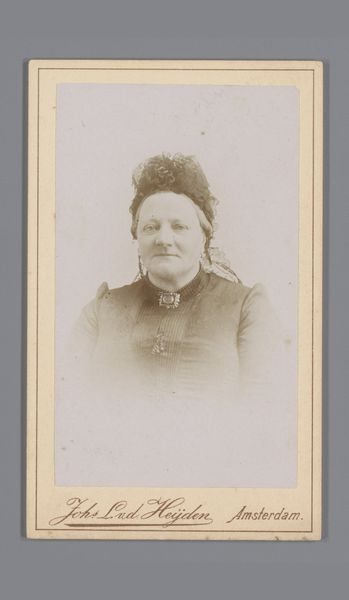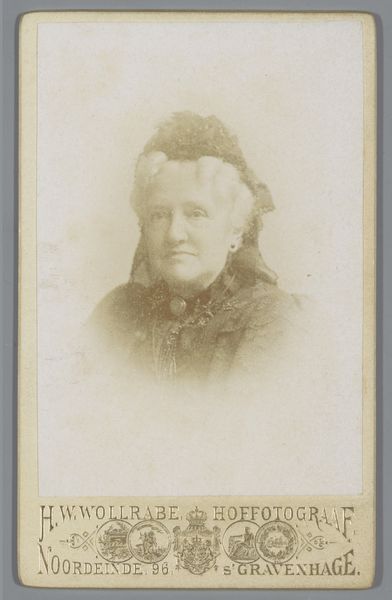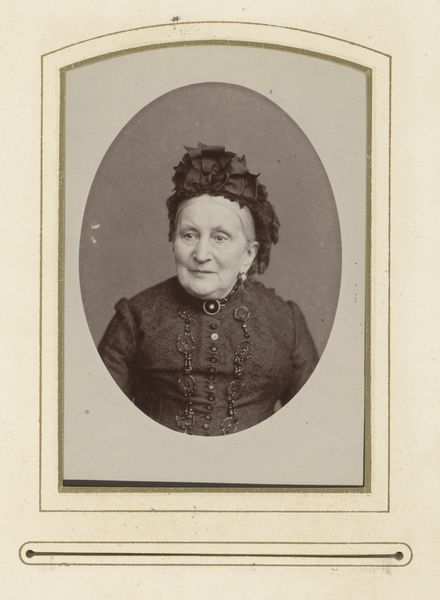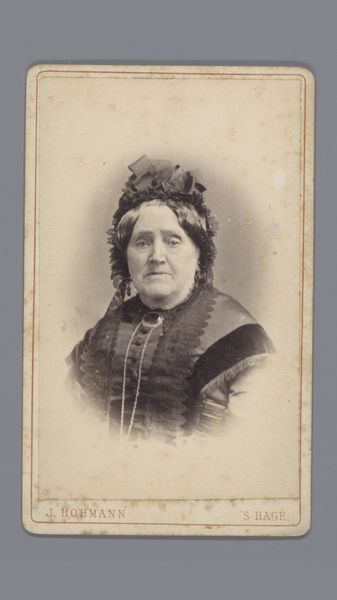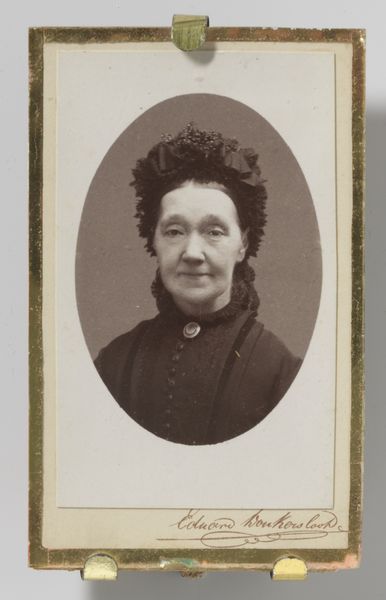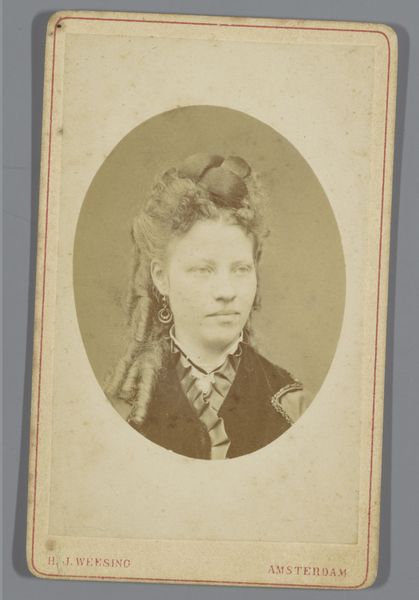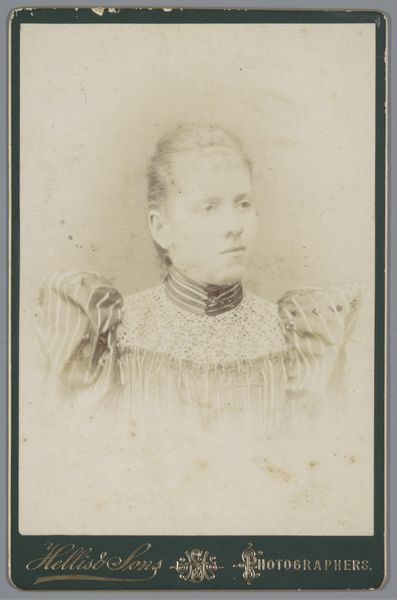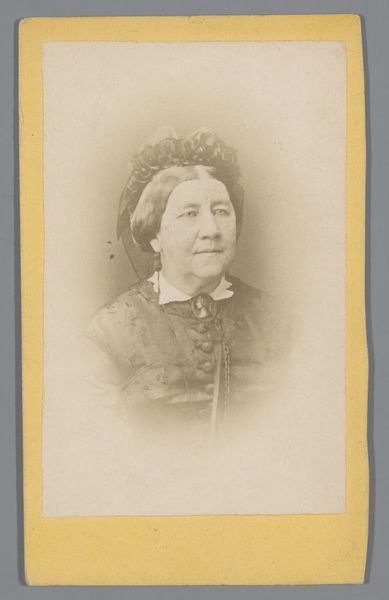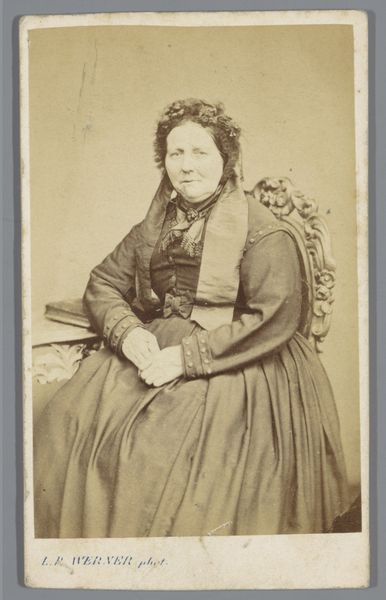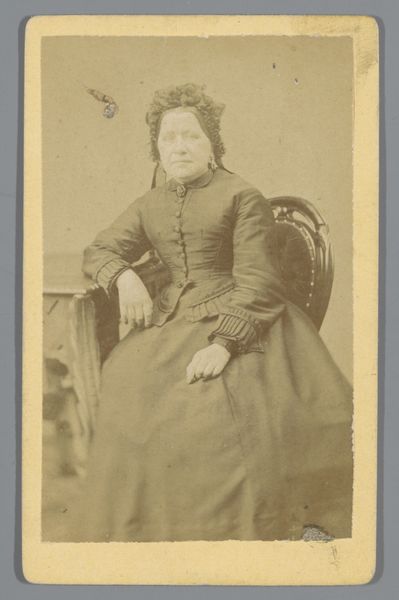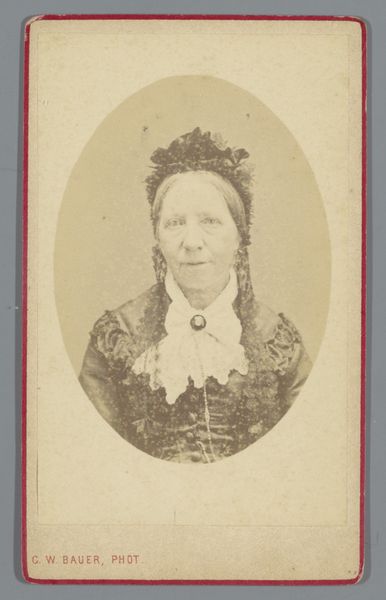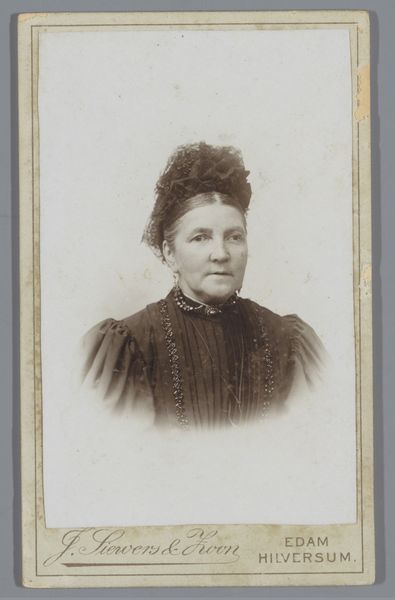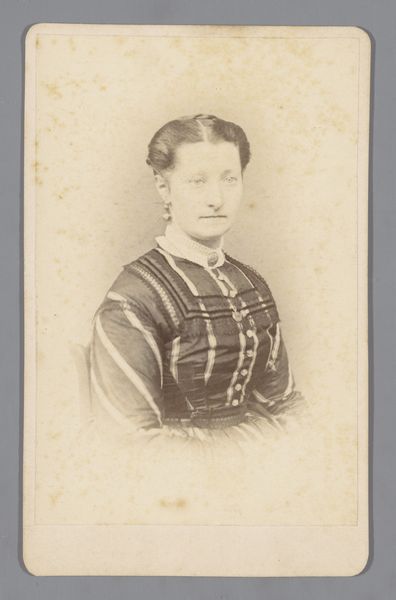
#
pencil drawn
#
photo of handprinted image
#
aged paper
#
toned paper
#
photo restoration
#
portrait reference
#
framed image
#
19th century
#
watercolour illustration
#
paper medium
Dimensions: height 104 mm, width 65 mm
Copyright: Rijks Museum: Open Domain
Curator: This is a portrait of an unknown woman, dating from between 1882 and 1900. The piece is held here at the Rijksmuseum. Editor: The image gives off such a hushed, domestic mood. I'm immediately struck by the soft, faded tones. It really speaks to the intimacy of this portrait form. Curator: It’s worth noting that the photograph comes from the studio of Johann Pörtzgen. One can see how the paper support acts as an essential ingredient. It almost feels like a relic from the past. Editor: Indeed, and you notice how much of the artistic process, even within a supposedly ‘objective’ medium, involved conscious manipulation? Think about the collodion process involved in producing the original image and subsequent prints, not to mention the retouching often involved at this time! Curator: You point to such interesting details that give nuance to our understanding of image production and photographic development. Speaking formally, it also demonstrates how the portrait leverages light and shadow to define the contours of the face, the soft gradations creating an interesting tonal map that draws the viewer's attention inward. Editor: It really underlines the performative act of making photographs available, popular and affordable—which shaped entire social classes, really democratizing representation. To me this reveals the artist’s influence not just in composition, but their shaping of culture itself. Curator: It seems that even the "accidental" alterations that come from material aging – discoloration, paper quality, the frame – these too impact the perception of meaning, offering depth to the artwork’s semiotic texture. Editor: Absolutely, seeing how these historical practices echo in our understanding today bridges historical technique with our contemporary lives and makes us reconsider photographic "truths". Curator: Perhaps that very mutability and physical alteration encourages more diverse interpretations in the viewer's consciousness. The object, in this context, becomes more like an event than a fixed representation. Editor: Agreed. It transforms this little photographic 'Portret' into something far more weighty and nuanced for a contemporary audience.
Comments
No comments
Be the first to comment and join the conversation on the ultimate creative platform.
